Car repair is a general term for the maintenance and repair of automobiles. You may want to rack and pinion repair shops near me and the cost of rack and pinion replacement.
It is to find out the cause of the malfunction of the car through technical means, and take certain measures to make it remove the malfunction and restore it to a certain performance and safety standard. Auto repair includes the auto overhaul and auto minor repair, auto overhaul refers to the repair or replacement of any parts of the car (including the basic parts) to restore the intact technical condition of the car and completely (or nearly completely) restore the life of the car restorative repair. A minor repair is an operational repair that uses the replacement or repair of individual parts to ensure or restore the car’s working ability. Many car owners have had the experience of being charged high prices by 4S stores for substandard repairs. Know your enemy, and be prepared. Here are 50 basic general knowledge of auto mechanical repair and maintenance.
1. What are the parts of the basic structure of a car?
A: Generally speaking, the basic structure of a common car is composed of four parts, which are: engine, chassis, body, and electrical equipment parts.
2. The four-stroke gasoline engine consists of those parts?
A: Four-stroke gasoline engine consists of the body, crank linkage mechanism, gas distribution mechanism, cooling system, lubrication system, fuel system, ignition system (diesel engines do not have an ignition system), and other components.
3. Four-stroke gasoline engine is how to work cycle?
A: The engine’s work process into the air, compression, work, exhaust four processes. The four-stroke engine is the four processes in the piston up and down the four strokes to complete.
- Intake stroke: the intake door is open, and the exhaust door is closed. As the piston moves from the upper stop point to the lower stop point, the volume above the piston increases, and the cylinder pressure decreases, generating vacuum suction. The natural gas mixture is sucked into the cylinder.
- Compression stroke: The intake and exhaust valves are closed, and the piston moves from the lower stop to the upper stop, pressing the gas mixture into the combustion chamber.
- Work stroke: At the end of compression, the intake valve, and the exhaust valve are still closed, the spark plug emits an electric spark, ignites the combustible gas mixture, the combustion of gas expansion, generating huge pressure, forcing the piston to move down quickly, by the connecting rod to push the crankshaft rotation and work.
- Exhaust stroke: the exhaust door opens, the intake door closes, and the piston moves from the lower stop to the upper stop and removes the exhaust gas.
4. The role of the body and the crank connecting rod mechanism and what are the main components?
A: The role of the body and crank connecting rod mechanism is: the fuel in the cylinder when the combustion of gas in the piston top pressure, with the help of the connecting rod into the crankshaft torque, so that the crankshaft drive work machinery to do work, the main parts of the body and crank connecting rod mechanism are cylinder block, cylinder head, piston, connecting rod, crank, flywheel, etc.
5. Explain the role of the air distribution mechanism and composition?
A: The role of the gas distribution mechanism according to the needs of the work, timely opening and closing of the intake and exhaust valves, the timely introduction of gas into the cylinder, and exhaust gas. At the same time, drive the distributor, gasoline pump, and other parts of the machine to work. The main parts of the gas distribution mechanism include the intake valve, exhaust valve, camshaft drive mechanism, etc.
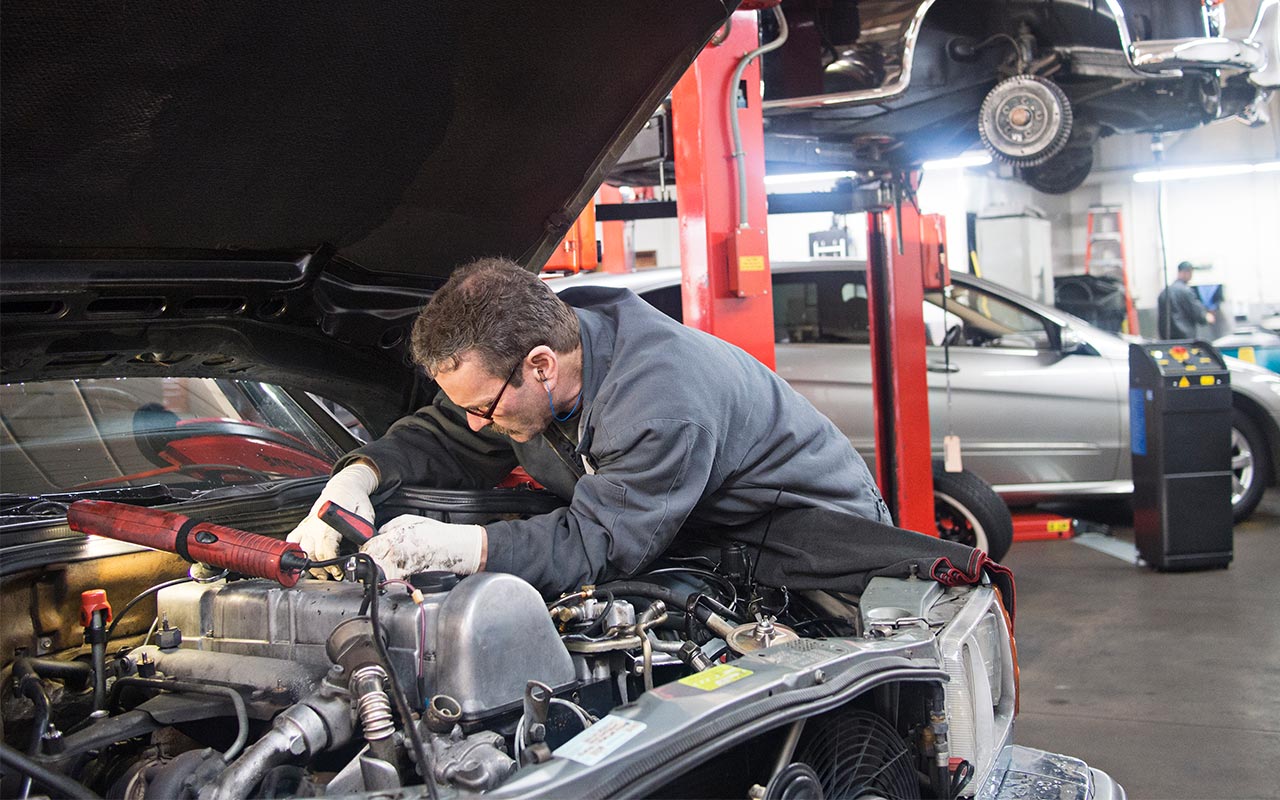
6. Explain the role and composition of the cooling system?
A: The role of the cooling system is: the heat of the high-temperature parts to the atmosphere to keep the engine working at normal temperature. A water cooling system is generally composed of an engine water jacket, water pump, radiator, fan, thermostat, water temperature gauge, and water release switch, and other parts.
7. What is the normal water temperature of the engine? How do control the water temperature?
A: The normal working temperature of a water-cooled engine should be 80-90 degrees. Engine temperature to liberate CA10B cars, for example, according to the engine temperature, pull out (i.e. open) or push out (i.e. open and close) the louver manipulation handle in the cab, change the amount of air into the radiator, so as to adjust the engine temperature.
8. What is the role of lubricating oil?
A: The role of lubricating oil: lubricate the friction parts, reduce friction resistance, can reduce power consumption.
The role of cooling: oil circulation flow, the friction heat away. Reduce the temperature of the machine parts.
Cleaning role: the impurities on the surface of the machine parts are flushed away, reducing wear.
Sealing role: maintain the oil layer between the piston and the cylinder wall, which can increase the sealing.
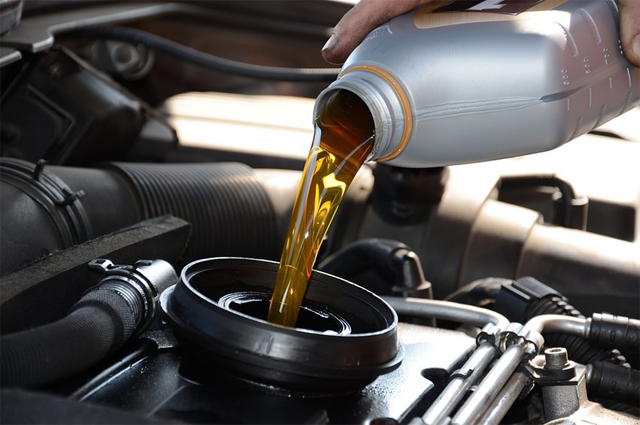
9. How to check the oil level of the engine?
A: When checking the oil level of the oil pan, park the car in a flat place, stop the engine and wait for a few moments, pull out the dipstick, wipe off the oil on the surface, and then insert the dipstick from the mouth of the dipstick to the bottom, so as to determine the amount of oil.
10. What is the normal oil pressure of gasoline engines and diesel engines?
A: Observe the oil pressure gauge on the instrument panel of the driver’s cab: the normal oil pressure of the gasoline engine is 200-500 kPa; the diesel engine is 600-1000 kPa.
11. What kinds of carburetor devices are there? What is the role?
A: The construction of the carburetor can be divided into five devices.
- Starting device.
- Idling device.
- Medium-load device
- Full load device.
- Acceleration devise.
The role of the carburetor is: according to the needs of the engine in different situations, the gasoline will be gasified, and mixed with air in a certain proportion into a combustible mixture. Timely and appropriate amount into the cylinder.
12. How does the diaphragm gas oil pump work?
A: Oil suction: When the cam rotates, the eccentric wheel moves the pump oil rocker arm. When the pump membrane is pulled down, the spring is compressed, and the volume above the pump membrane increases and the pressure decreases, resulting in suction force, which closes the outlet valve, and gasoline enters the pump chamber from the tank through the gasoline filter inlet valve.
Oil delivery: After the cam continues to rotate and the eccentric wheel turns, the spring of the common oil rocker arm is pushed back and the pump membrane spring pushes the pump membrane to the top, and the gasoline inside the pump chamber is sent to the float chamber of the carburetor from the oil discharge flash pressure.
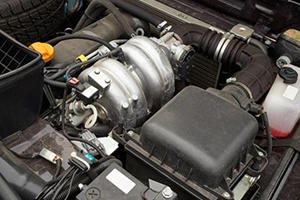
13. What are the main components of the driveline? What role does it play?
A: The driveline consists of the clutch, transmission (and splitter), drive shaft, universal joint, reducer, differential, half shaft, and other components.
The role of the transmission system: the engine output power to the drive wheels drive the car.
14. What is the role of the clutch?
A: The role of the clutch is to make the engine power and transmission smoothly combined or temporarily separated, so that the driver can start, stop, shift gears, and do other operations of the car.
15. What is the role of the gearbox?
A: It is suitable for the car driving resistance change, change the driving wheel torque and speed.
It makes the car go forward or backward.
In neutral, it interrupts the power transmission and disconnects the engine operation from the vehicle movement.
16. What is the function of differential?
A: When the car turns, the distance traveled by the vehicles on both sides at the same time is unequal, and the outer wheels move a greater distance than the inner wheels, thus the planetary gear on the cross shaft of the differential is affected by the resistance of the wheels. At the same time the rotation of the rotation, automatically increases the speed of the outer wheels, so that the outer wheels speed up, and the inner wheels become slower and play a differential role. In a straight line. The differential does not work.

17. Tires in use should pay attention to what check?
A: Check the tire wear, if the tire wear is too much, the braking effect will be reduced (and road friction is reduced) when the braking distance is longer, easy to burst at high speed, such tires should be replaced in a timely manner.
Insufficient tire pressure or uneven tire pressure on the left and right sides, will also cause poor braking effects, steering difficulties, or heavy steering, but also reduce the service life of the tires. When the load is large, the above consequences are more serious. Therefore, tire air pressure should be timely inflation.
The left and right wheels should choose the same specification, and type of tire, and the wear level should be the same. Otherwise, it will affect the vehicle’s steering and braking performance.
Check whether there is any fracture, damage, or foreign matter (such as nails) on the ground of the tire, and remove any debris at the seam of the two rear wheels in time.
18. What are the parts of the steering system? How to steer?
A: The steering system is generally composed of a steering manipulator, steering rack, and steering mechanism. When turning the steering wheel, the steering shaft and worm gear rotate with this, rolling and worm gear mesh-up and down, so that the steering rocker arm swings, pushing the straight tie rod back and forth. So the turning knuckle takes the main steering pin as the center and drives one side of the front wheel to deflect, so as to control the purpose of vehicle steering.
19. What is meant by front wheel alignment? What does it include?
A: In order to make the car maintain stable and straight driving, steering light, reduce the wear of tires and steering parts in the exercise of the car, the front wheel, steering the main pin, front axle installation between the three have a certain relative position, which is called “front wheel positioning”. It includes front wheel camber, front-wheel front beam, steering knuckle main pin inward, and steering knuckle main school backward.
20. What is the role of the hand brake?
A: A hand brake is a kind of braking device that makes the car not slip when it is parked, and under special circumstances, it is used for emergency braking or foot-operated failure times with foot-operated.
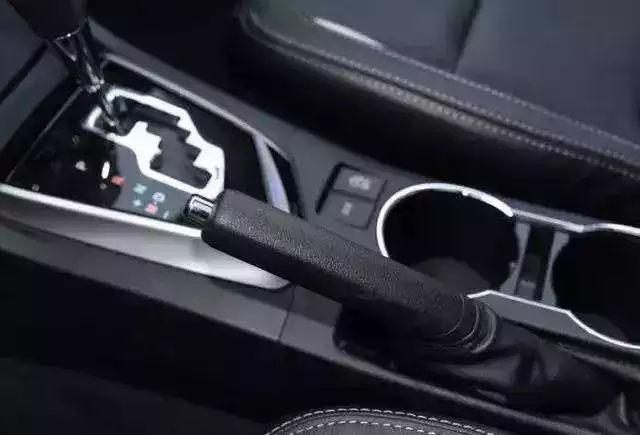
21. What are the components of the air brake? How does it work?
A: air pressure brake device by the brake pedal, air compressor, air pressure meter, brake law, brake room, wheel brakes, brake lines and other components. When the brake pedal, the brake valve opens the storage cylinder to the brake air chamber channel, so that the compressed air in the storage cylinder through the brake valve into the brake air chamber, by the transmission mechanism, pushes the brake shoes open to compress the brake drum, so that the wheel braking effect.
22. What are the components of the hydraulic braking device? How does it work?
A: hydraulic brake device by the brake pedal, brake master cylinder, brake wheel cylinder, wheel brakes, brake roll, piping, and other components. When the brake pedal, the piston pushes the master cylinder to move forward. Make the cylinder brake fluid pressure, the oil through the oil pipe pressure into the brake wheel cylinder. At this time, the wheel cylinder piston opens outward, pushing the brake shoes and brake drum contact, producing a braking effect.
23. What is the role of the battery?
A: The role of the battery is to supply the engine with electricity; in the engine running at low speed, the engine power generation is insufficient to lighting, audio devices, and ignition system with electricity; when the engine is running at high speed, the generator power generation is sufficient to store excess electricity. Battery charging and discharging can be displayed by the ammeter.
24. How to use and maintain the battery?
A: Keep it clean, remove the dust and dirt and oxide in time.
Install the battery cable and battery post firmly.
The electrolyte of the battery should be 10-15mm higher than the pole plate. When it is not enough, it should be added in time.
Check the specific gravity of electrolytes frequently. Generally, it should be kept between 1.220-1.260.
Avoid violent discharge, such as using the starting time should not be too long, etc.

25. What is the role of the ignition system?
A: The role of the ignition system: is the battery or generator output of low-voltage electricity through the ignition coil into high-voltage electricity, and then by the distributor according to the engine cylinder work order, in turn to the spark plug caused by jumping fire, ignition combustible mixture, so that the engine running.
26. What is the role of the disconnector?
A: The role of the disconnector is to turn on and off the low-voltage circuit so that the ignition coil produces a high-voltage current.
27. What are the main lights of the car?
A: Headlights (including high beam and low beam), front position lights, rear position lights, license plate lights, instrument lights, turn signals, brake lights, hazard warning flashers, reversing lights, front fog lights, etc.
28. What is the routine maintenance of the vehicle? Why should drivers do routine vehicle maintenance?
A: Routine maintenance is the driver before leaving the car, driving, after the car’s inspection, cleaning, tightening, and adding role. The situation of each department of the car is changing at any time. When parked, it will also occur when the failure or damage of the machine parts. If you can’t find and exclude these faults in time, it is directly related to the safety of driving, the life of the machine parts, and the consumption of fuel and lubricant. Therefore, the maintenance work must be done carefully.
29. What are the main items that should be checked before leaving the car?
A: The driver should check the following items before leaving the car: lubricant quantity, fuel quantity, cooling water, hand, and foot brakes, horn and sound, lighting device, wiper, steering device, instrument, tire pressure, tire nuts, etc.

30. What are the main items that should be checked while driving?
A: When the car is in motion, the driver should check.
Review the working condition of various instrument panels while driving.
Check whether the steering system is working normally.
Check whether the role of hand and foot brakes are normal.
Check the engine and chassis in the operation of the sound and abnormal odor.
Use the parking time (generally about 50 kilometers) to check the following items.
Hand test the brake drums of the front and rear wheels to see if they are overheated.
Check the tires, nuts tightening, and clear the tire tread plus debris.
Check for oil, water, and air leaks.
Check whether the steel plate spring is broken and whether the connecting bolts of the drive shaft are loose.
Check the bundling of the goods carried, etc.
31. What are the main items that should be checked and maintained after receiving the vehicle?
A: Check and replenish fuel and lubricating oil.
Clean the interior and exterior of the vehicle, as well as the engine and chassis.
In the severe winter season, such as the cooling system in the antifreeze is not added, the radiator cap and drain switch, engine drain switch should be opened, the cooling water drain, and do a short time to start, the water drainage, so as to avoid residual freeze crack cylinder, radiator, air brake vehicles should be released in the storage cylinder of sewage.
Turn off the engine and close the door and tighten the hand brake, check the ammeter for leakage (the pointer points to the “-” side).
Check the horn, lighting, and wiper.
Check whether the steel plate spring is broken, spring lugs or riding bolts are loose.
Check the half-shaft and tire nuts, and see if there is any damage to the rim.
Check the tires for cracks and air loss.
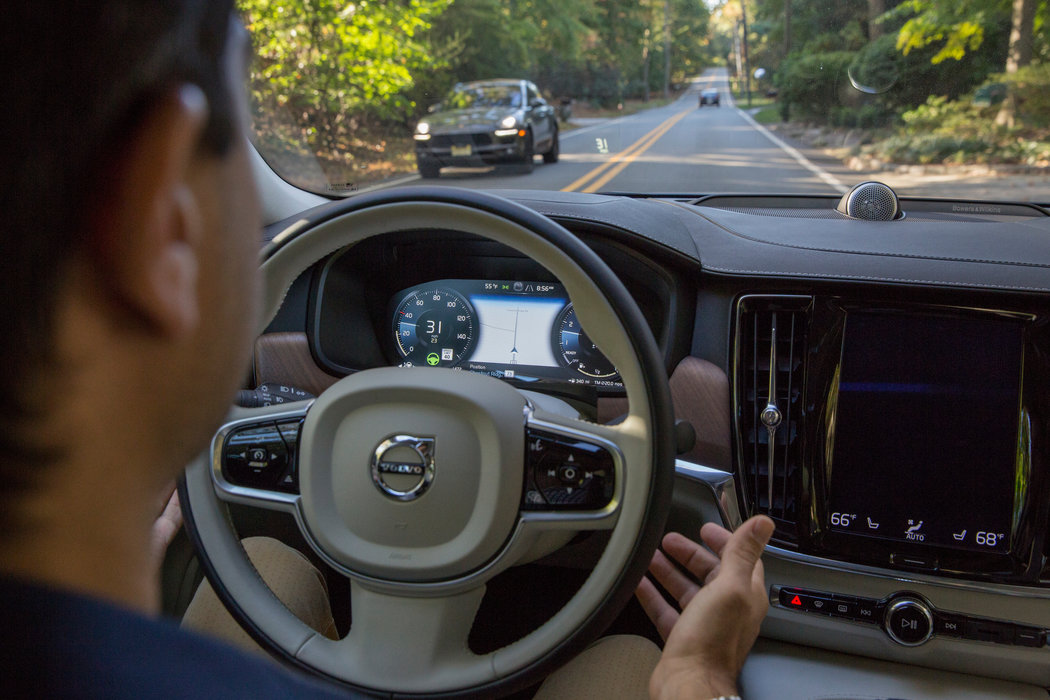
car driving1
32. What are the requirements of the first level of vehicle maintenance?
A: After the completion of the first level of maintenance operations, should achieve a clean and tidy, solid connection, three filter smooth, no oil, no water, no gas, and no electricity leakage.
33. What are the cleaning operation items of the first level of vehicle maintenance?
A: Maintenance cleaning operation items.
Clean the body and wipe the engine and chassis parts.
Clean and maintain the air filter
Clean the gasoline filter
Release the deposits in the oil filter, turn the filter handle 3-4 turns, clean the oil filter, and replace the filter element according to the degree of pollution.
Release the oil and water deposits from the air reservoir.
34. What are the vehicle maintenance lubrication operation items?
A: Maintenance and lubrication operations projects.
Check the engine, transmission, rear axle, and steering oil plane, according to the provisions of adding lubricant.
Each part of the vehicle oil nozzle is equipped with complete, effective, according to the provisions of the filling (water pump, rotation shaft and universal joint, steering knuckle, steering rod, etc.) grease.
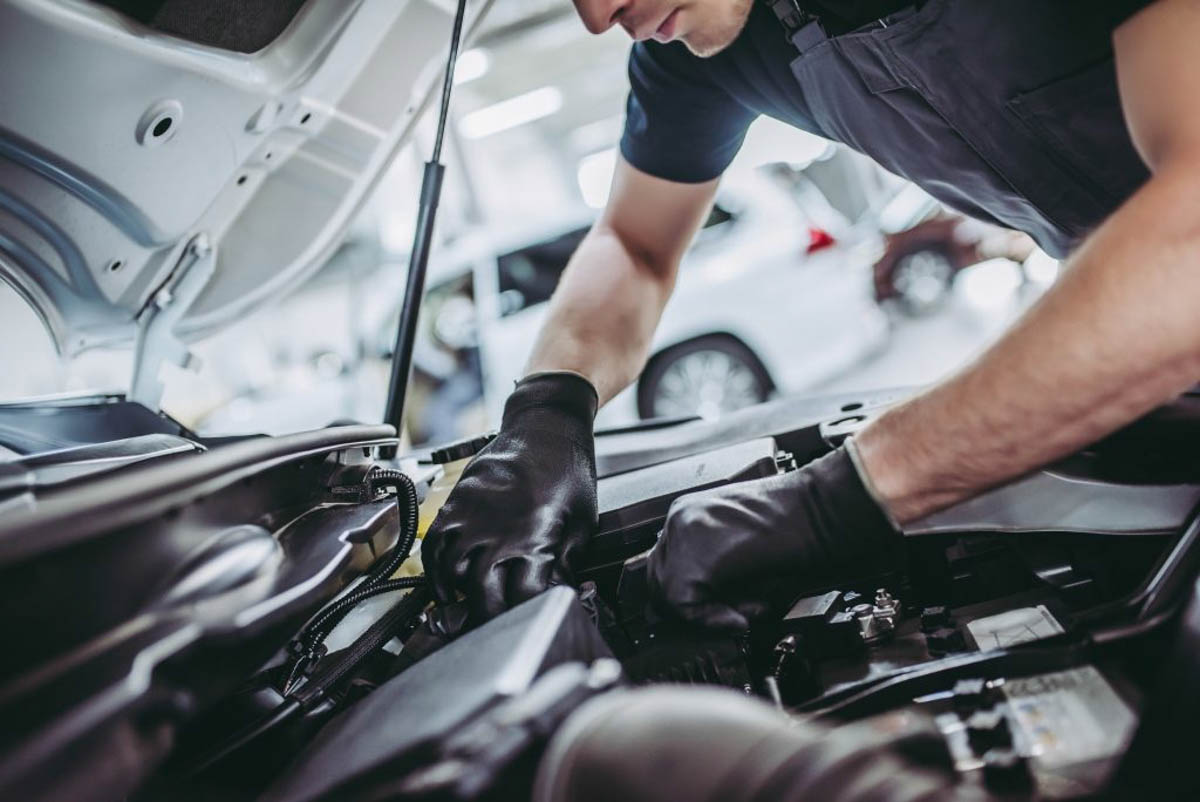
35. What are the vehicle maintenance inspection and fastening operation items?
A: Maintenance inspection and fastening work items.
Check the steering gear, cross tie rod, straight tie rod, and each steering arm connection tightness.
Check and adjust the air compressor, engine, and fan belt tightness and fixed.
Check the brake valve, and brake pipe for air leakage, check the brake fluid level of the hydraulic brake master cylinder and add brake fluid as required.
Check and adjust the clutch pedal, the free travel of the brake pedal, and check whether the brake pedal fixed shaft and cotter pin are intact and reliable.
Check and tighten the connections and bolts of all parts of the vehicle.
Check the tire pressure and check whether there is any damage to the tires.
Check the battery casing, unclog the vent hole of the small cover and replenish the electrolyte.
Check whether the lights, wiring, and wiper switch are complete and intact. Check whether the volume tone of the horn is normal and whether the various instruments work well.
36. What are the faults that often occur in the oil circuit of gasoline engines?
A: Gasoline engine common oil circuit failure is generally plugging, leakage, bad and other three. Frequent failures are.
The fuel tank switch is not open or the bottom of the fuel tank is too dirty, the fuel pipe is blocked or the fuel tank has no oil.
Gasoline filter or carburetor inlet pipe joint screen clogging or loose oil pipe joints flare mouth rupture and oil leakage.
The gasoline pump fails or air resistance is generated in the oil circuit.
The main oil passage of the carburetor is blocked or the triangular needle valve is stuck and no oil is fed.
37. Briefly explain how to check whether there is oil in the incoming fuel pipe of the carburetor?
A: Remove the carburetor connection pipe and turn the pump handle of the fuel pump by hand or use the starter hand crank to turn the engine to observe.
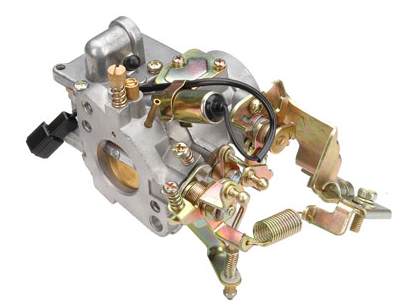
38. How to adjust the idle speed?
A: engine idle speed adjustment method: engine idle speed is unstable, should be adjusted when the engine temperature is normal, oil, no fault in the circuit.
(1) with a screwdriver (commonly known as a screwdriver, awl) slowly release the throttle opening adjustment screw, about to turn off, in a little spin into a little to maintain engine operation.
(2) adjust the idle mixture adjustment screw. Make the engine reach the speed.
(3) spin out the valve opening adjustment again, to achieve stable idle speed, both acceleration does not stall until.
39. How to use the starter fire test engine cylinders work?
A: Use the starter to disconnect the ignition of a cylinder, the engine running with no change, it can be identified as the cylinder working or working poorly.
40. Ignition system is often prone to what failure?
A: The ignition system of gasoline engine failure is generally: low-pressure break, low-pressure short circuit, high-pressure fire weak, ignition misfiring, ignition time is not correct, etc.
41. How to check the disconnector contact gap?
A: There is a certain gap when the distributor disconnect contacts are separated. If the gap is too small, jumping fire is easy to ablate the contacts; if the gap is too small, the contact closure time is short, reducing the low-voltage current through the generator, high-speed rotation, easy to break the fire phenomenon, the general gap of 0.35-0.45 mm. When adjusting, remove the distributor and distributor head, turn the crankshaft so that the electricity is completely open, loosen the set screw that fixes the contact, adjust the eccentric screw, use the thickness gauge to measure the required gap, and then tighten the set screw that fixes the contact.
42. How to check the good or bad of the ignition coil?
A: Ignition coil inspection.
Remove the distributor’s low-voltage articulation head, open the ignition switch, scratch, and touch the latch, if the spark is good, it proves that there is no fault in the low-voltage circuit before entering the distributor.
Pull out the high voltage wire in the central jack of the distributor cover, make its end close to the cylinder 7-8 mm, then use a screwdriver to pull up the contact arm, make the contact open, close and close. At this time, the central high-voltage wire ends produce a strong high-voltage spark, if no high-voltage spark or weak, indicating that the ignition coil is faulty or capacitor failure, etc.
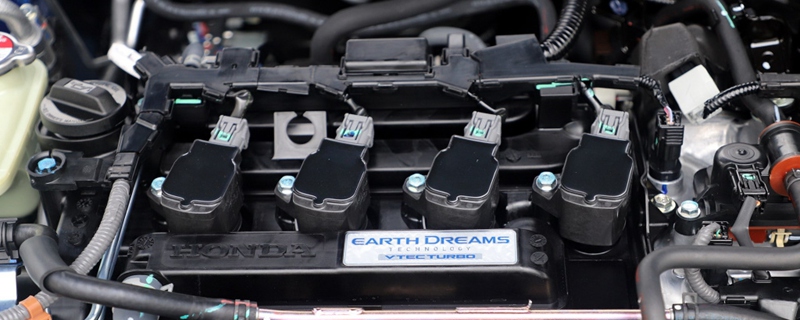
43. How to check the distributor and distributor head?
A: Check the distributor cover: Check the distributor cover for cracks and use a high voltage spark to check. Take off the distributor, hold all the high voltage wires in one hand, make the end at 3-4mm of the cylinder, turn on the ignition switch, poke the contact arm with the driver, and make the contact open, and close. If there is a high-voltage spark from a distributor end skipped, it means that this distributor cover has been damaged.
Check the distributor’s head: turn the distributor head over, put it on the cylinder head, and then use the distributor cover central cover pressure appears to be at the end, about 7-8 mm from the distributor head cavity to fire. If the distributor head insulation is good, the high voltage spark will not skip, otherwise, it means the distributor’s head has been damaged.
44. How to check the capacitor?
A: capacitor inspection: capacitor work poorly or fails, will make the high voltage spark weakened, break contact often ablation, the inspection method is: remove the distributor cover central high voltage line, 5-7 mm from the cylinder, open the ignition switch, toggle the break contact to check the high voltage jump fire, and then the capacitor wire head removed, check the high voltage jump fire, the spark should be greatly weakened If the difference between the two high-voltage jump fires is not large, the capacitor should be replaced if it fails.
45. How to adjust the free travel of the clutch pedal?
A: The free travel of the clutch pedal should be 20-30 mm. When the clutch cannot be completely separated or slipping occurs due to friction, the free travel of the clutch pedal should be adjusted. If you want to reduce the free travel of the pedal, you can tighten the ball nut of the release lever, and if you want to increase the free travel, you should loosen the ball nut.
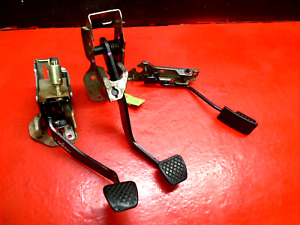
46. What is the cause of unstable direction?
A: The clearance of the transmission mechanism in the steering machine is too large.
The cross and straight tie rod ball joints are worn loose.
Excessive clearance between steering knuckle main pin and bushing.
Loose front wheel hub bearing.
Misalignment of the front wheel.
47. What is the cause of heavy steering?
A: The causes of heavy steering are
The Cross and straight tie rod ball pin is too tight or lacks grease.
The steering knuckle pin and bushing are too tight or the thrust bearing lacks grease.
Misalignment of the front wheel.
48. What is the reason for insufficient braking power and weakened braking efficiency?
A: Insufficient air pressure (air pressure type), low reservoir oil level (hydraulic type).
The pedal-free travel is too large.
Control valve diaphragm rupture or depression (air pressure type), master cylinder piston bowel leakage (hydraulic type).
Brake air chamber diaphragm or damaged (pneumatic type), wheel cylinder piston skin bowl leaking oil (hydraulic type).
Poor sealing of the exhaust valve of the control valve (pneumatic type).
Loose pipe joint or broken pipe leaking air or oil.
Improper adjustment of brake shoes and brake clearance, and possession of oil or mud on the shoe skin.
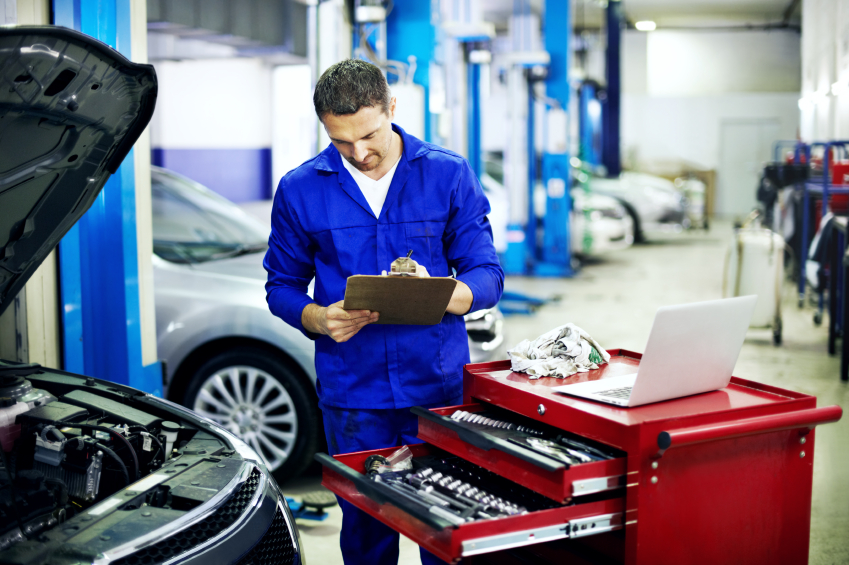
49. Braking after the braking effect does not eliminate the phenomenon and the reason is what?
A: In the driving, when the brake pedal is relaxed, the braking force is not seen to recede, the car can not start or start after driving difficulties, the reasons are as follows.
Control valve arm and exhaust valve travel improperly adjusted or exhaust valve spring is broken, there is rust and dirt will be stuck exhaust valve so that the valve can not open.
The brake air chamber push rod extends too long or is skewed and stuck.
The brake cam has dirt on the axis of the cam holder and the axle frame on the brake disc is not in a straight line and commits a card.
The brake shoe’s four-position spring is too soft.
The clearance between the brake air chamber shoes and the brake drum is too small.
The brake shoe support pin is dislocated or rusted.
There is water inside the brake air chamber (icing in winter) that squeezes the diaphragm of the brake air chamber.
50. What is the phenomenon and cause of brake runout?
A: When braking, due to the left and right wheel-braking effect is not the same, the wheel to one side deflection, the reasons are as follows.
Individual brake chamber diaphragm rupture, brake wheel cylinder bowl oil leakage or gas pipe, oil pipe rupture, loose joint leakage.
Individual brake air chamber push rod is skewed or bent and stuck.
Brake arm camshaft rust and dirt stagnation.
Left and right wheel brake shoes and the brake drum gap size are not equal, the friction pad material is different or the contact situation is different.
Individual wheel brake shoes in the support pin rust stagnation and can not turn freely.
Individual wheel brake friction pads have oil and mud or hardening, wear too much, or rivets exposed.
Individual brake drum friction loss garden, there are grooves.
The left and right tire pressure are uneven.
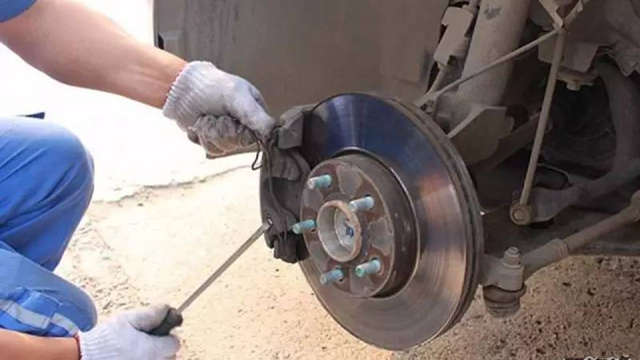
(We do not share your data with anybody, and only use it for its intended purpose)
The Previous Articles:
What Is Rack and Pinion Bushing? How To Tell If Rack and Pinion Bushings Are Bad?
Why Steering Rack Makes Noise When Turning?
How To Rebuild A Steering Rack?
What Is A Rotary Valve Power Steering Rack?
Rack And Pinion System Vs Power Steering System: What Are The Differences?
Power Steering Rack Market Analysis Report (Japan Market)
What Causes Steering Rack to Go Bad?
Design Of Car Rack And Pinion Steering Racks
What Is The Intelligent Steering Rack Used By VW, Toyota, Honda And Renault?

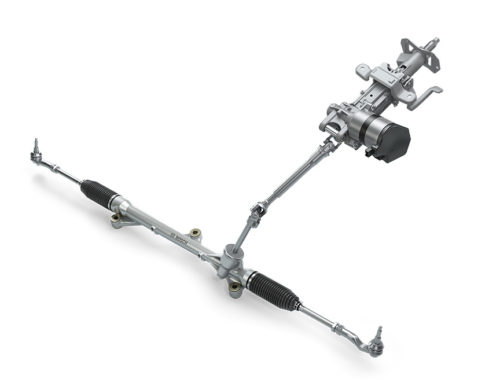
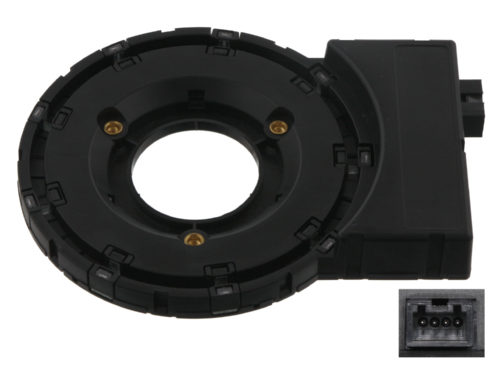
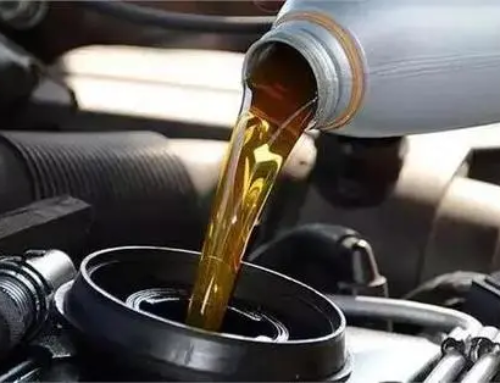
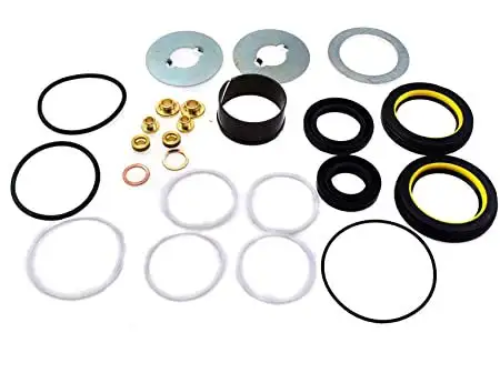
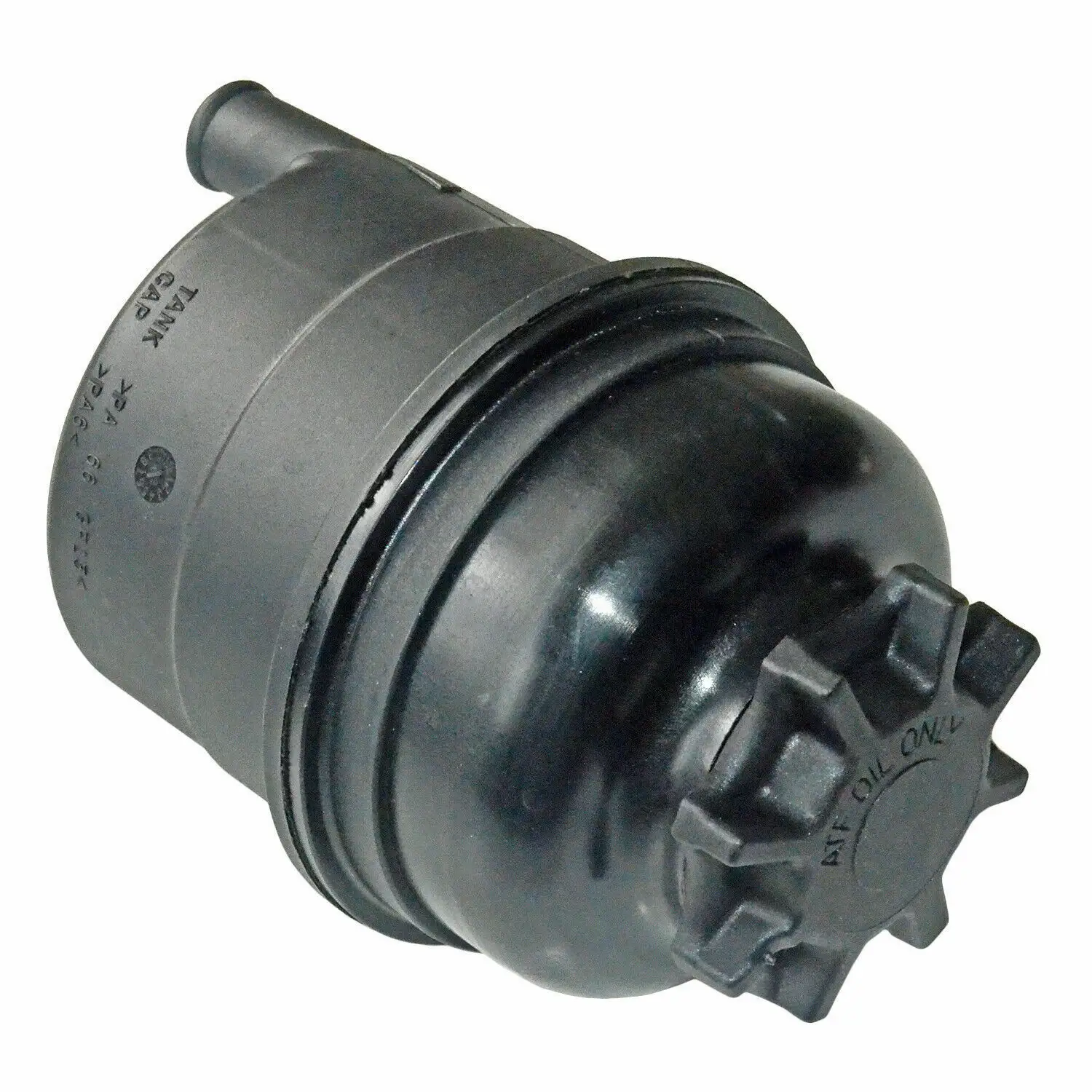
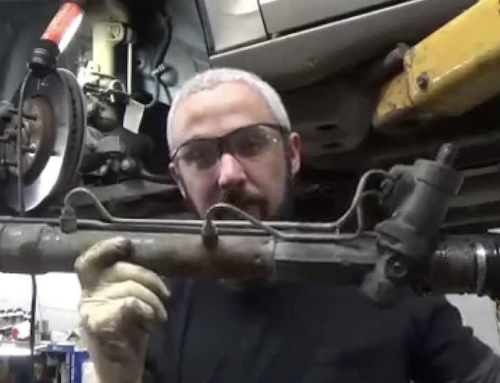
Leave A Comment